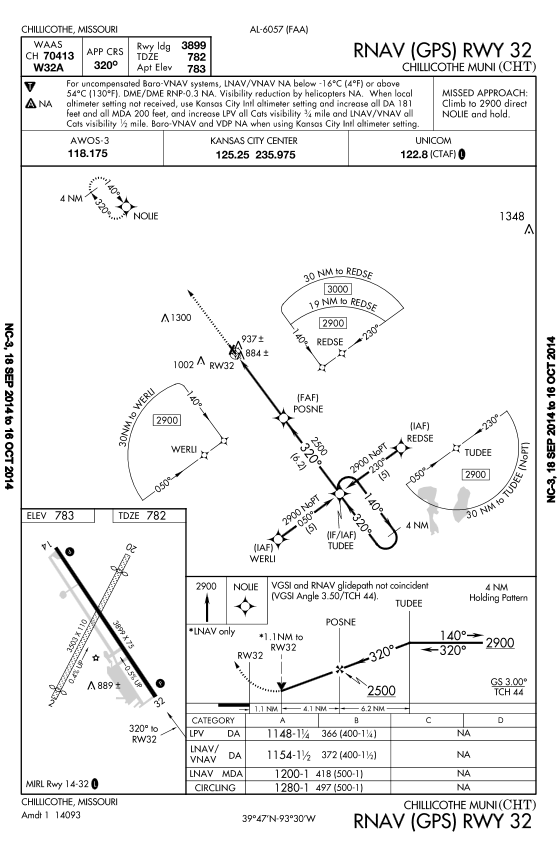Circling approaches are designed whenever the final approach course is not aligned within 30 degrees of the runway centerline, or when the descent gradient from the FAF to the threshold exceeds 400 feet per nautical mile.
RNAV Approaches
There are several different minima available for RNAV approaches, due to the varying capabilities of approach approved RNAV equipment. Refer to the aircraft flight manual or supplemental flight manual to determine which for which minimums the RNAV receiver is approved.
Receivers that qualify for LNAV minimums provide lateral navigation only. For this reason, an MDA is provided as the LNAV minimum altitude.
LP refers to localizer performance. Equipment qualified to use LP minimums provide lateral and angular guidance, which does not refer to a glide slope. Angular guidance refers to the ramping up of CDI sensitivity as you fly down the final approach course, mimicking a localizer. LP equipment utilizes the improved accuracy of the wide area augmentation system, or WAAS. WAAS improves the accuracy of GPS by determining position error from the GPS satellites, then transmitting corrective data to the airborne receiver. Since no vertical guidance is provided, an LP minimum altitude is established as an MDA.
LNAV/VNAV minimums are used by aircraft when the airborne equipment provides vertical navigation. The VNAV is usually provided by barometric aiding, in which a non-satellite data source is used to assist the calculation of the proper vertical path to be flown. Since lateral and vertical guidance is involved, the LNAV/VNAV minimum altitude is established as a DA. However, LNAV/VNAV are not considered a precision approach, but rather an approach with vertical guidance, or APV.
LPV approved equipment takes advantage of the improved accuracy of WAAS to provide lateral and vertical guidance. LPV stands for localizer performance with vertical guidance. LPV equipment increases CDI sensitivities as you approach the runway, resulting in an approach that is almost identical to a Category I ILS approach from the pilot's perspective. The minimum altitude associated with LPV minimums is a DA, and an LPV approach is an APV.
RNAV approaches are setup so as to eliminate the need for a course reversal procedure, even when in a non-radar environment. Normally, a final approach waypoint is placed about 5 miles from the end or and aligned to the runway for which the procedure is designed. Another fix, which might be used as an initial approach or intermediate approach waypoint is placed about 10 miles off the end of the runway. Two waypoints are then placed at perpendicular angles to this waypoint at a distance of 5 miles. Altogether, this group of waypoints forms a T shape.
